 |
|
|
plants text index | photo
index
|
| coastal plants | Cerbera in general |
| Pink-eyed
pong pong tree Cerbera manghas Family Apocynaceae updated Jan 13 Where seen? This beautiful tree with pretty pink-eyed white flowers is rare. Even in the past it was rare, among the locations where it was found were Pasir Panjang and Katong, shores now already reclaimed. It now found in the wild on Chek Jawa, with a large stand at Pulau Semakau. They are also planted at St. John's Island. According to Giesen, it is found in coastal swamp forests or on beaches, preferring well drained sandy soils, exposure to sea breezes but not regularly inundated by tides. Features: Tree up to 15-20m tall, but in Singapore usually shorter. Produces a white sap from all broken plant parts. Bark fissured, flaky, grey to brown with lenticels. Leaves oval (12-30cm long) dark green and glossy, held in dense spirals at the tips of the twigs. Leaves generally smaller than that of the more common Yellow-eyed Pong pong tree (Cerbera odollam). Flowers (3-4.5cm) white with pink centre, first orange pink then reddish pink. The flowers appear at the tips of the twigs. Fruits mango-shaped or oblong (5-7cm) glossy hard, often paired. Green ripening pink, rosy purple and finally black. The fruits float are dispersed by water. When they wash up, often only the fibrous husk is left, around a hard stone. It is the caterpillar host-plant of the King Crow butterfly (Euploea phaenareta castelnaui). Human uses: See the fact sheets on Cerbera species in general for more about their uses. Status and threats: The tree is listed as 'Critically Endangered' on the Red List of threatened plants of Singapore. |
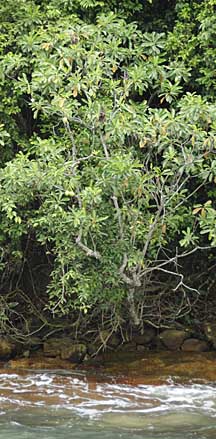 Near the high water mark on a natural rocky shore. Chek Jawa, Oct 09 |
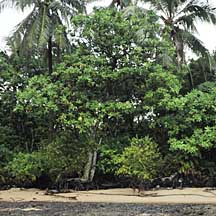 Pulau Semakau, Jan 09 |
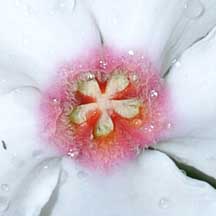 |
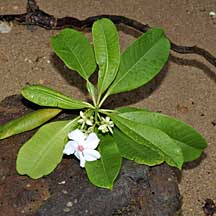 |
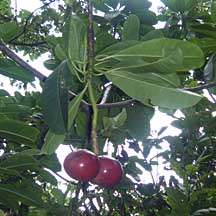 Pulau Semakau, Sep 09 |
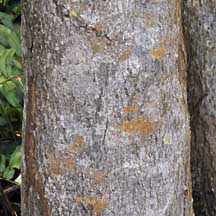 Pulau Semakau, Feb 09 |
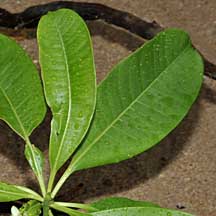 |
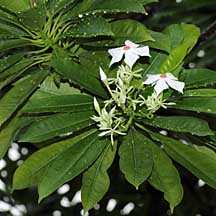 Planted in park. St. John's Island, Jul 09 |
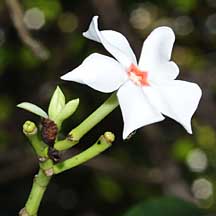 Chek Jawa, Apr 08 |
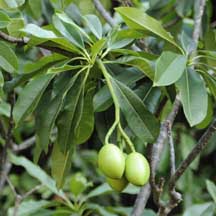 Chek Jawa, Jun 09 |
Pink-eyed
Pong pong trees on Singapore shores
| Photos for free download from wildsingapore flickr |
|
Links
References
|
|
|